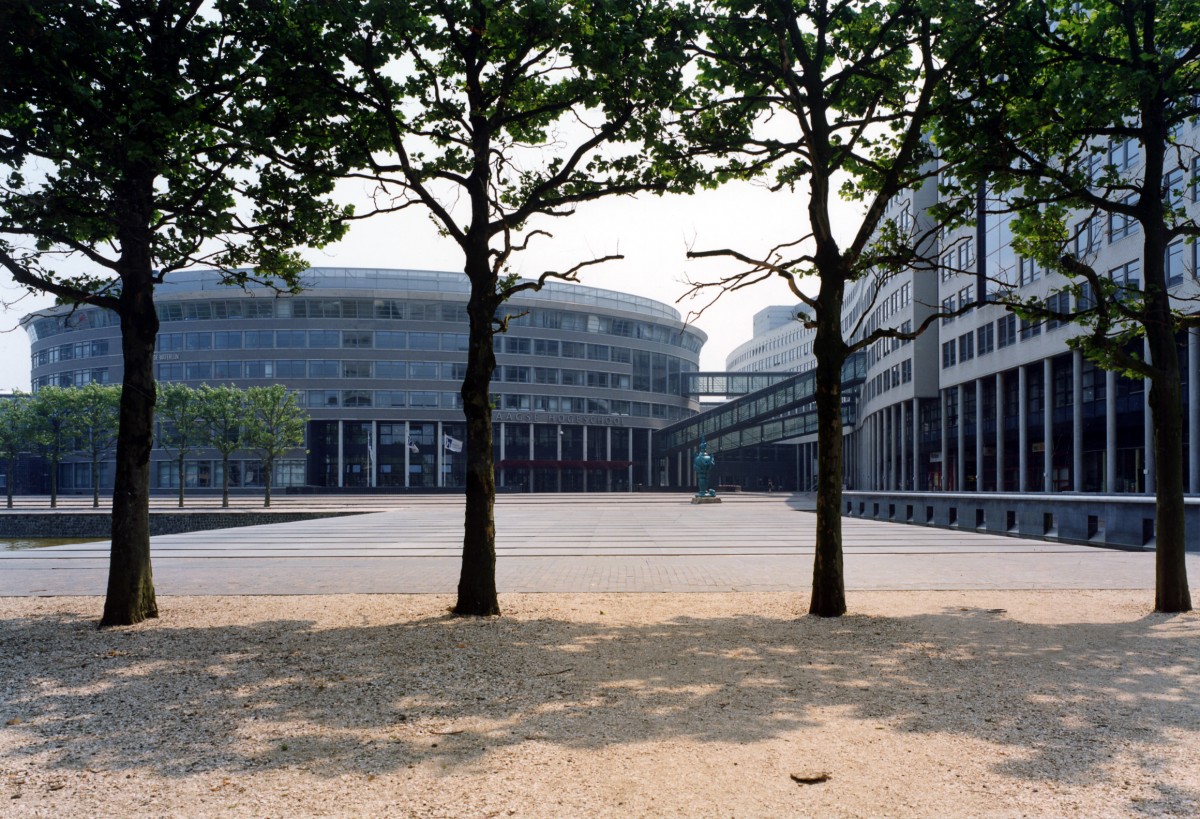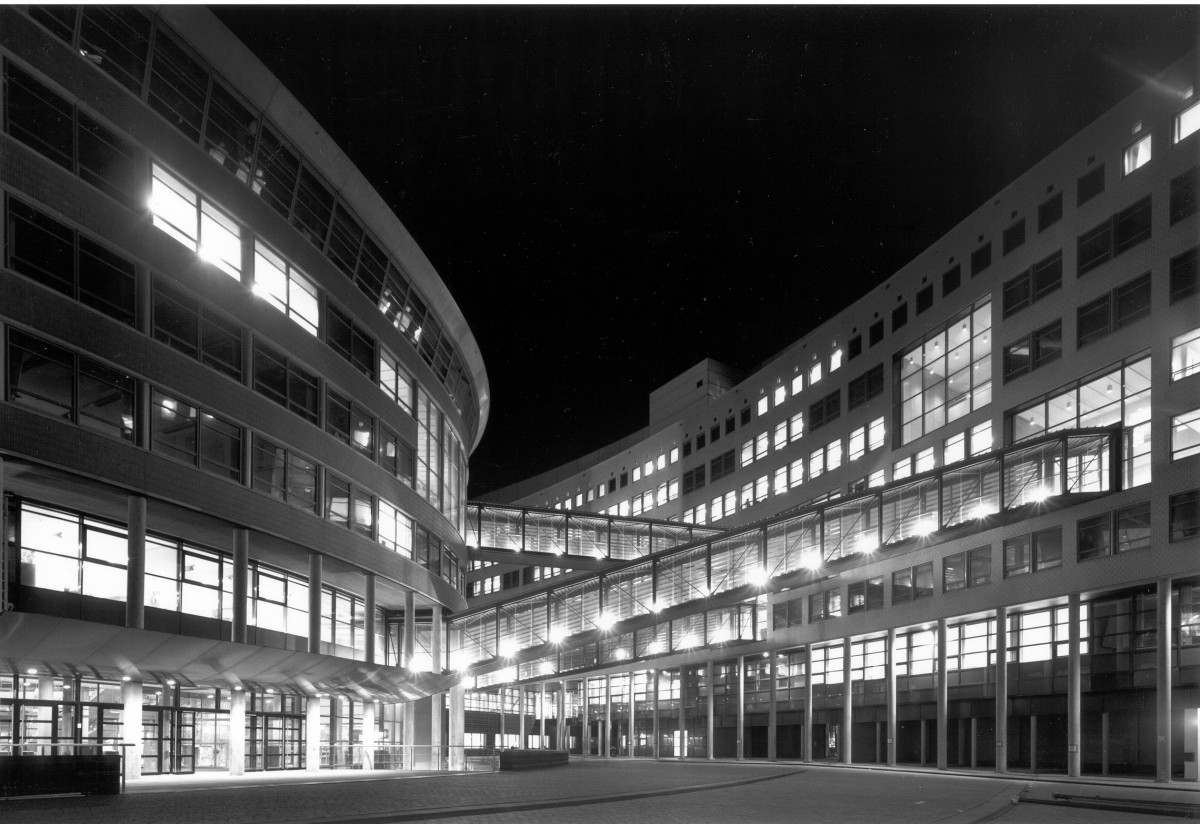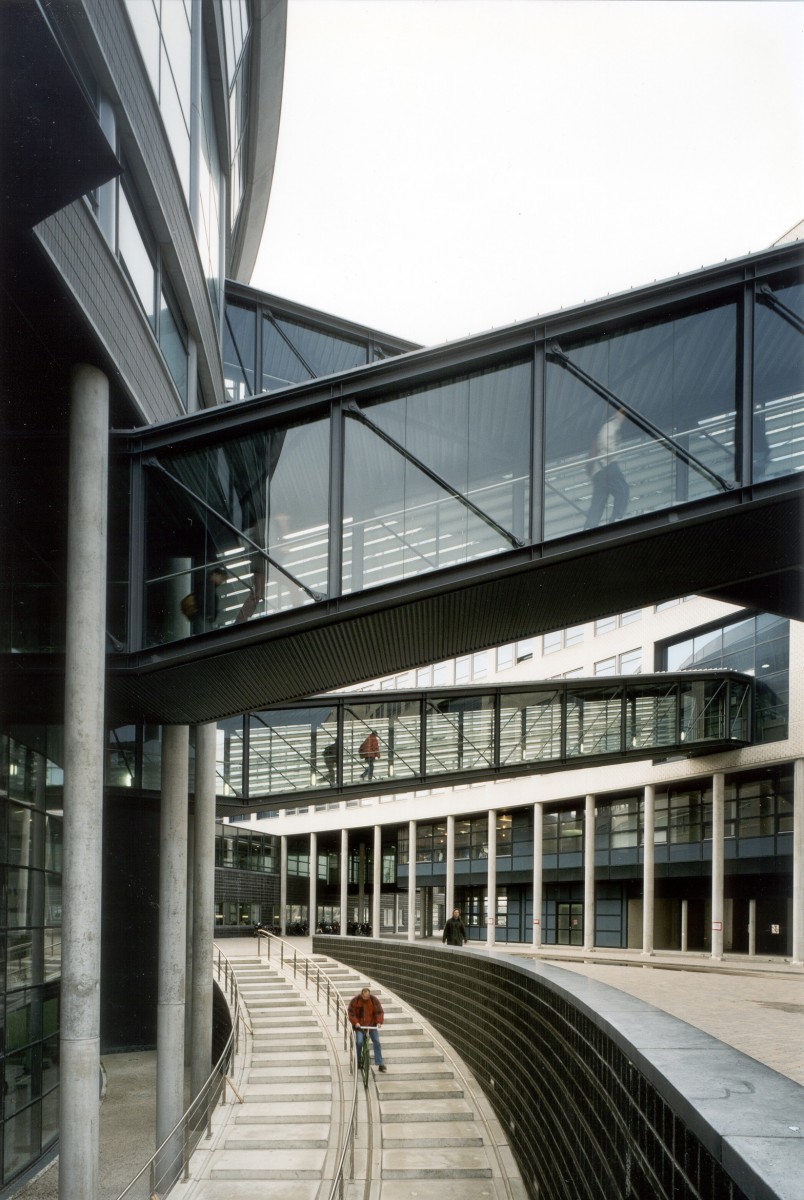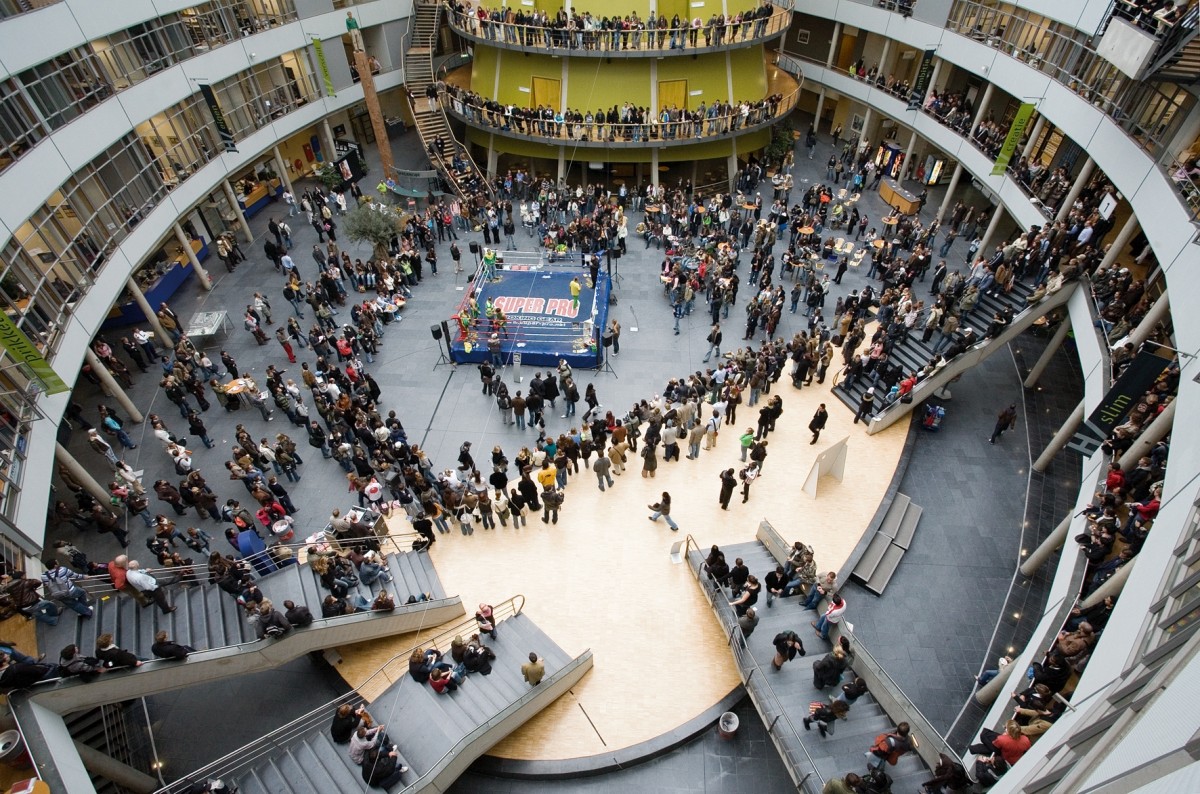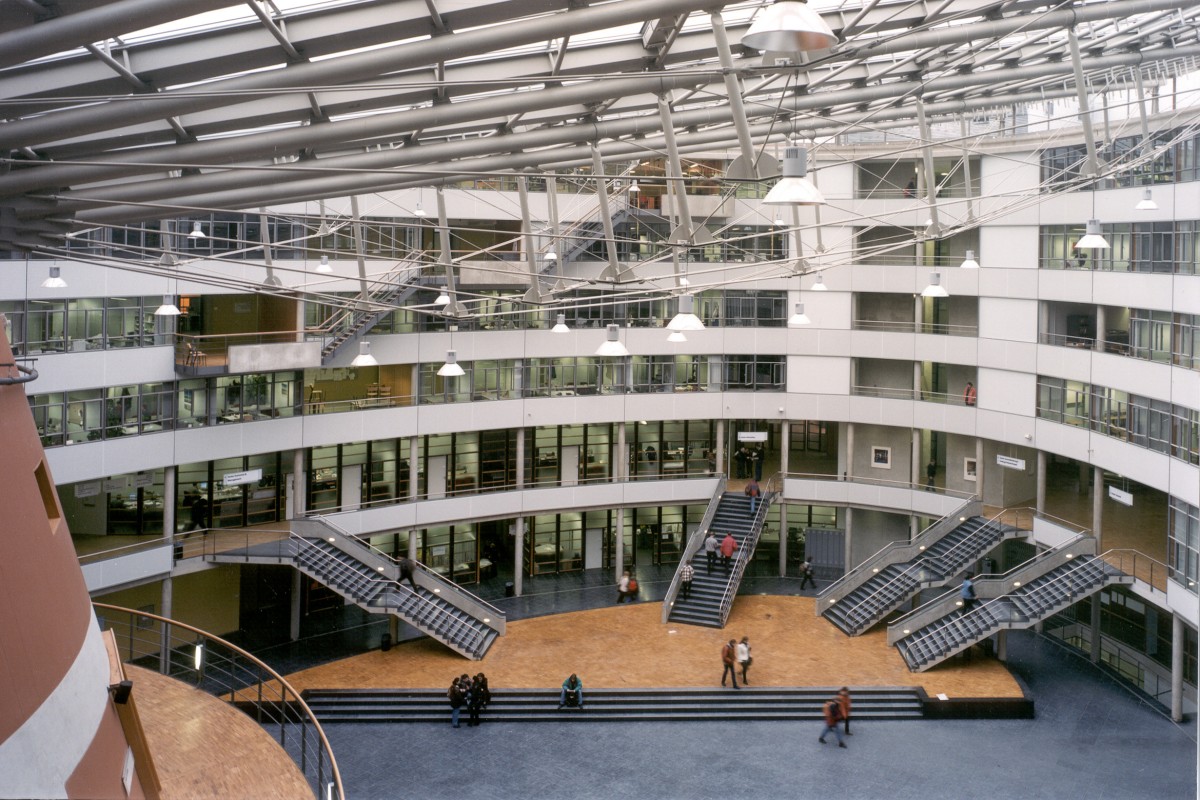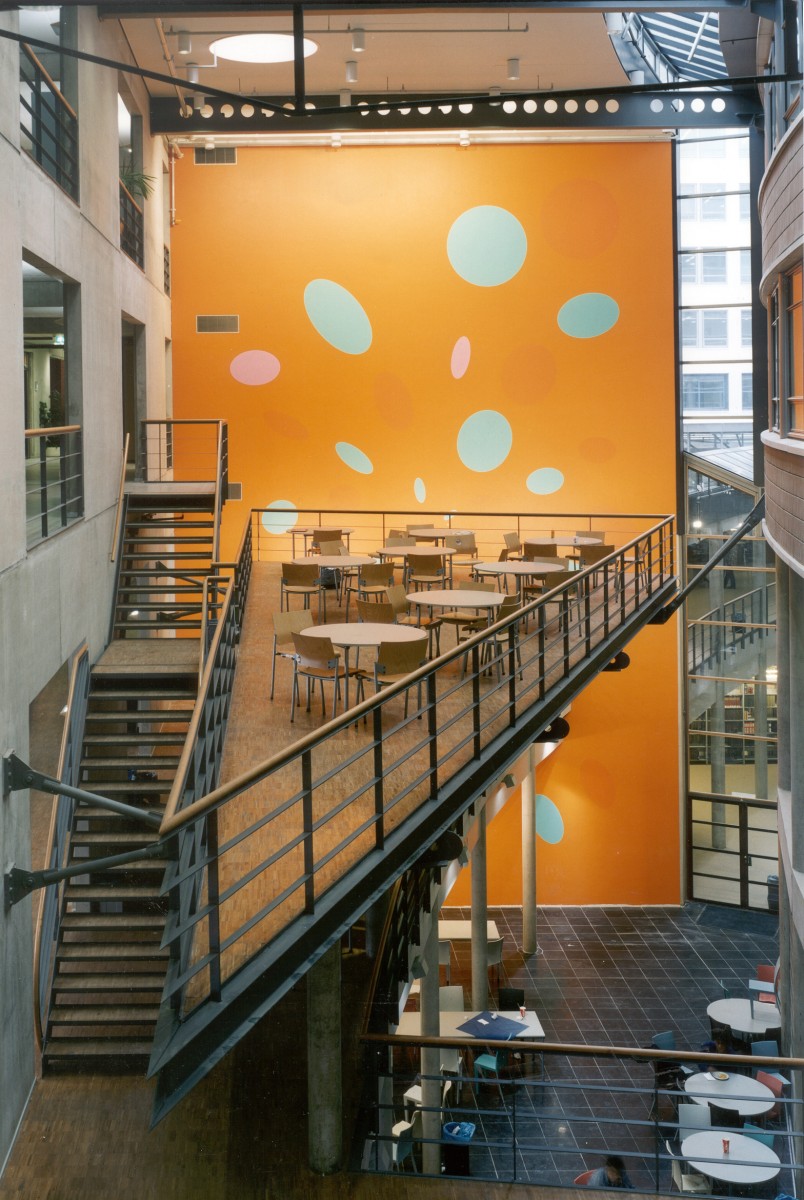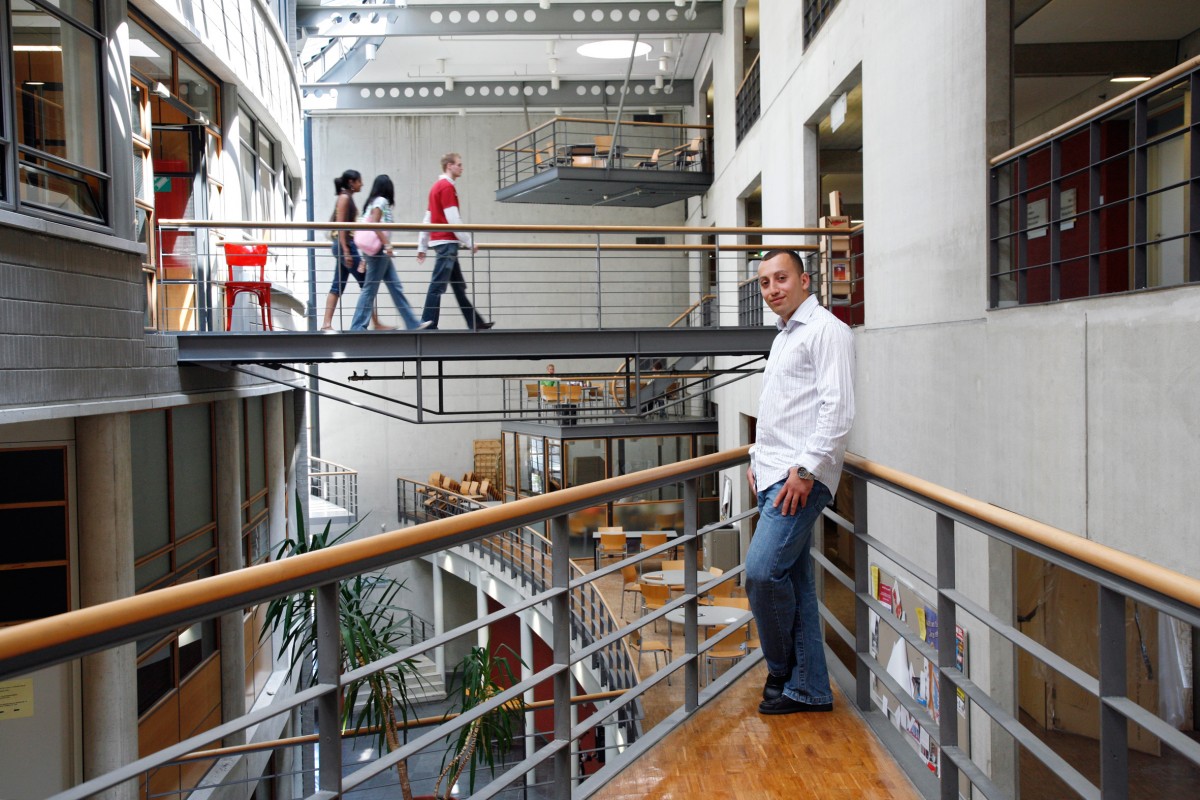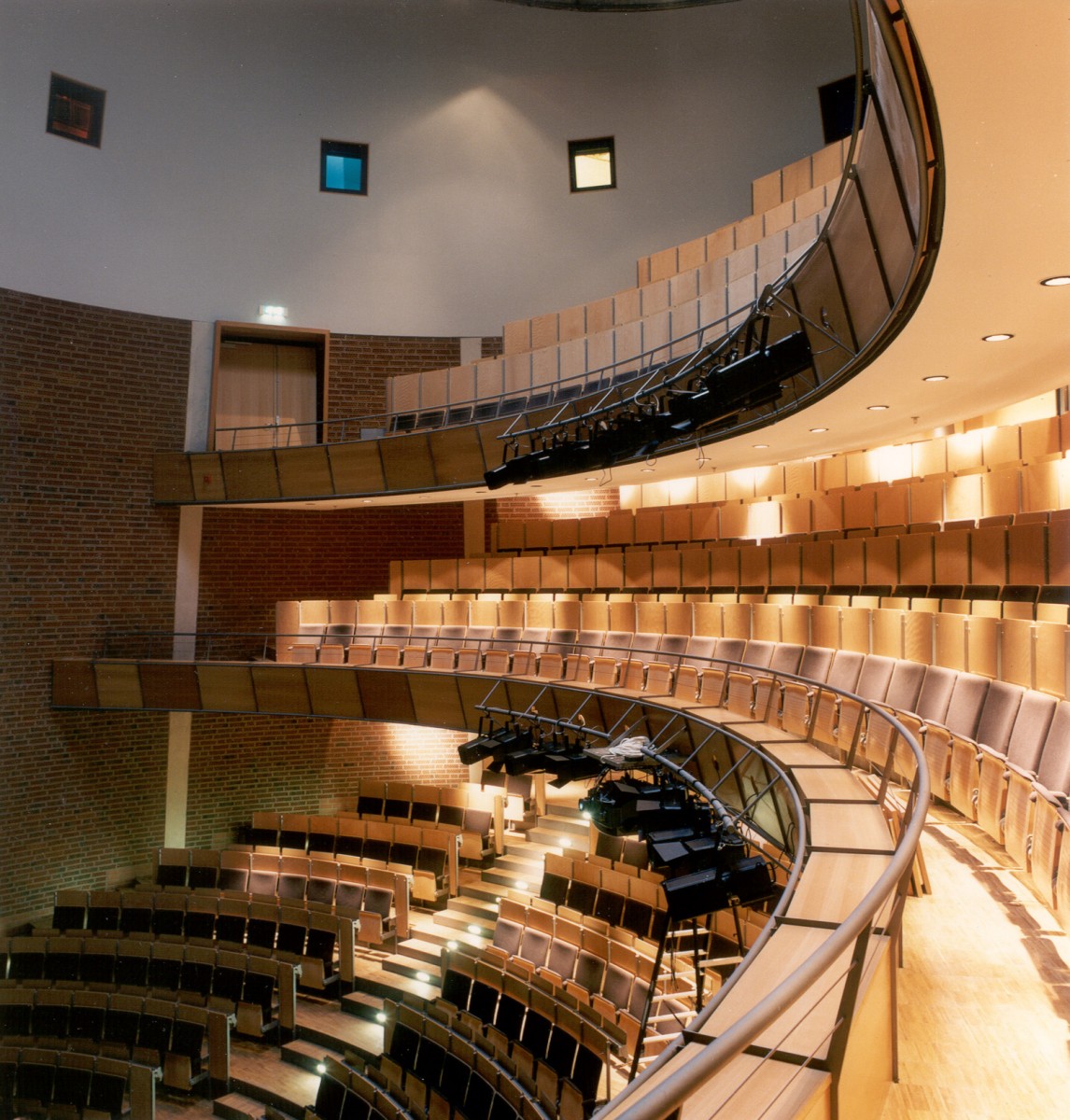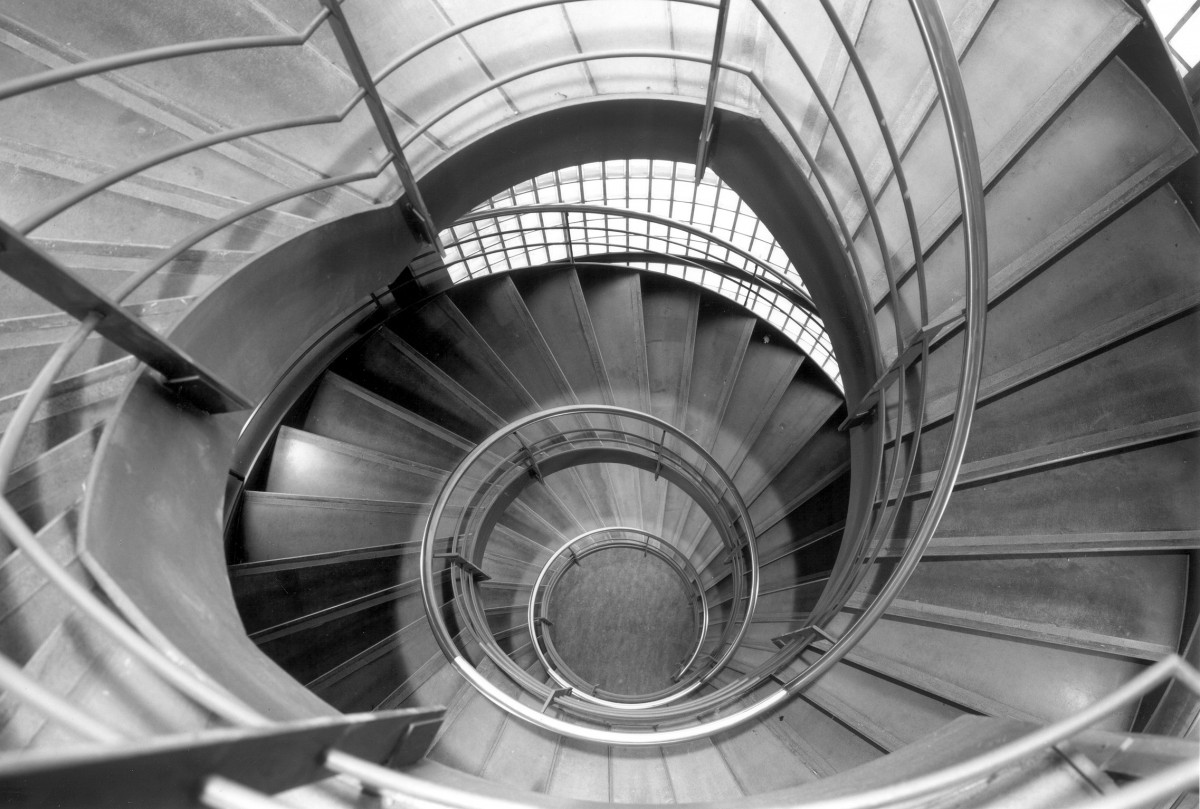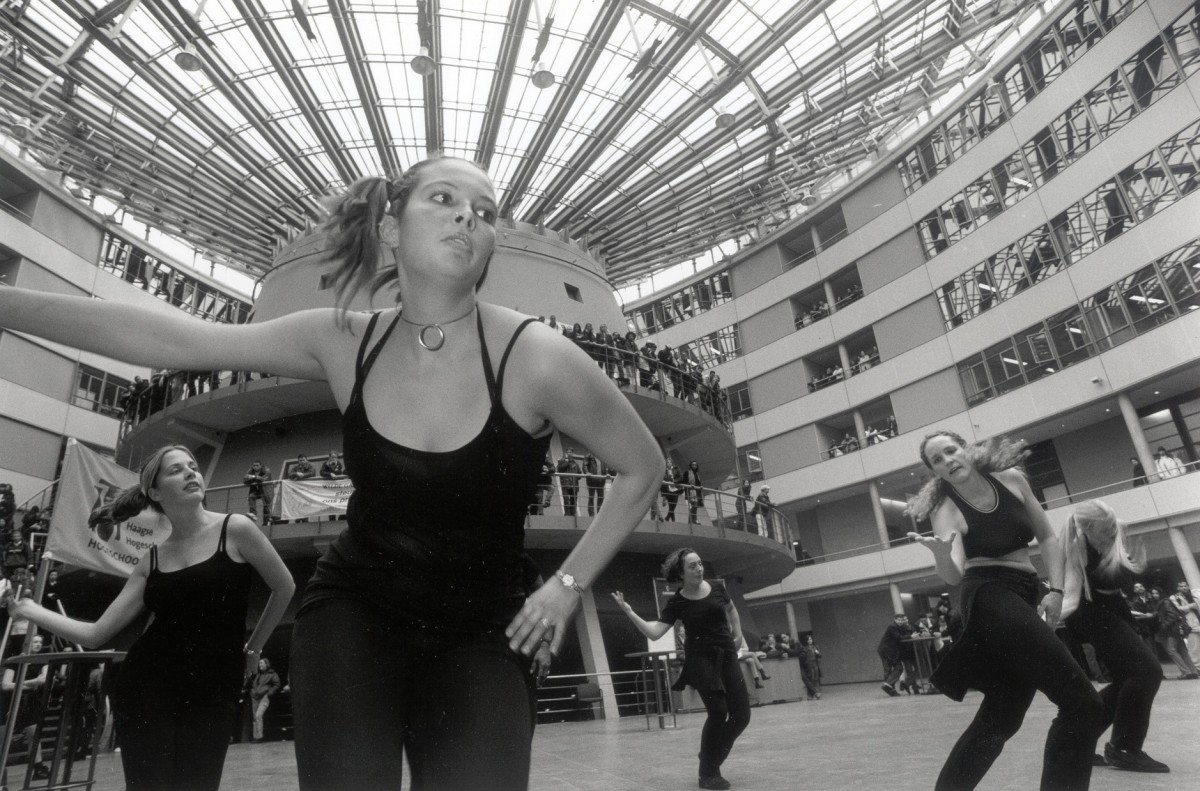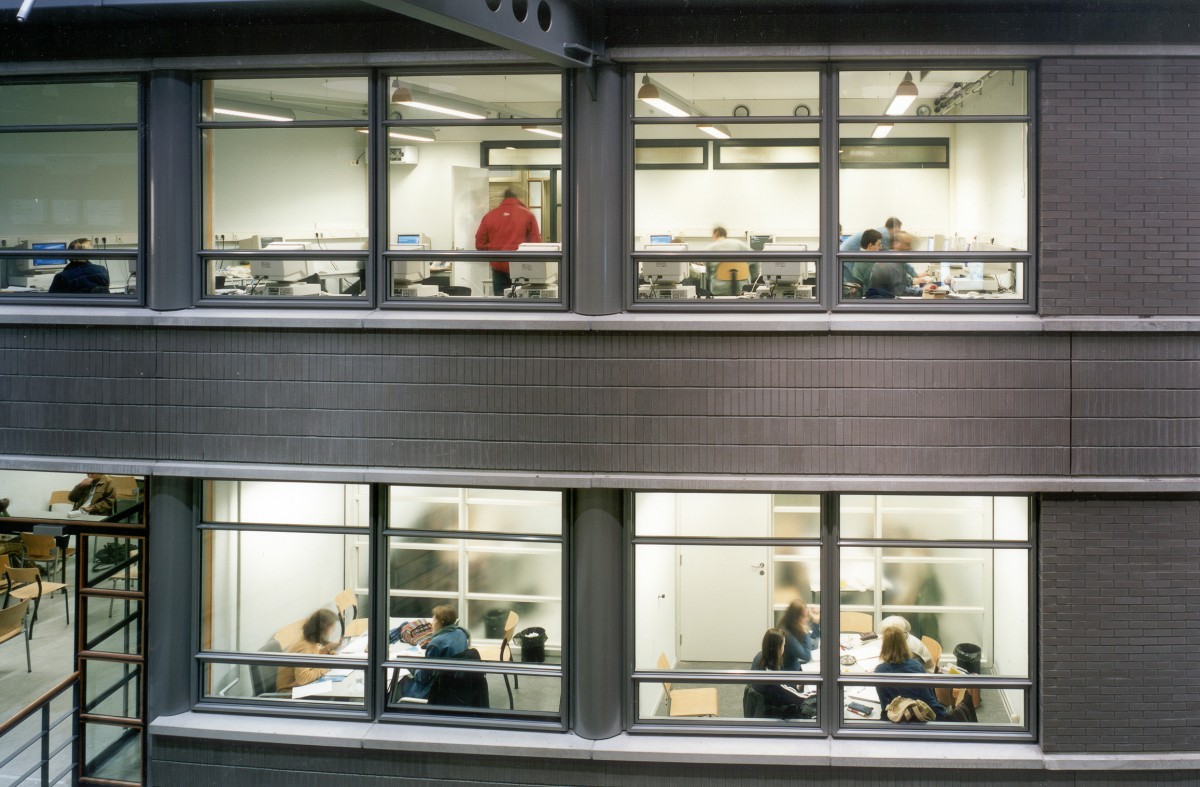The Haagse Hogeschool or The Hague University of Applied Sciences is configured as an assemblage of 'teaching wings' reached from a central core cum service unit. This oval-shaped core is the spatial, functional and symbolic hub of the extensive complex (82,000 m² floor surface area) which accommodates daily 13,000 day students and 2500 evening students. The teaching wings together add up to three kilometres of classrooms and practical labs plus the same corridor length of rooms for the 1200 teachers and other staff members.
The education given at the Haagse Hogeschool is clustered in five sectors. As these have to cope with wildly fluctuating numbers of students, the physical territories of these sectors are able to expand and contract accordingly. Each sector has a centre where sector-specific teaching and staff rooms are concentrated. Around it are ranged such non-sector-specific spaces as classrooms and teachers' common rooms whose neutrality means that in principle any one sector can appropriate them (though of course expanding one sector is inevitably at the expense of another). Further, the two elongated wings have space that can be let as offices to take up future expansion (or contraction) of the Hogeschool as a whole.
A hierarchical access structure informs the university. In the central core, the thousands of students, teachers and other staff join one of five 'flows' leading to the various sector centres. These flows, aided by an 'urban fabric' of internal squares, main roads, side streets, alleys, footbridges and stairs, steadily exfoliate into a finely meshed labyrinth of pedestrian routes. The elongated upper storeys of the teaching wings are diagonally incised by rectilinear cascades of stairs.
As the Laakhaven area (masterplanned by atelier PRO) to which the Haagse Hogeschool belongs, is shot through by public cycle paths and pedestrian routes, a large part of the horizontal pedestrian traffic is lifted up to the first storey. Taken up in the ground-floor 'plinth' of the teaching wings are shops, cafés and restaurants, and spaces for commercial services - a move to ensure safety in the public open space and stitch the university into its surroundings.
There is a high degree of standardization and repetition in the spatial and structural format of the building. Serial production enabled all loadbearing elements to be realized in such a way that the carcassing is in principle also the cladding. Likewise, the entire supporting structure (facades, corridor walls) also acts to separate the spaces.
See for the the later extension of the school Haagse Hogeschool Plein +


